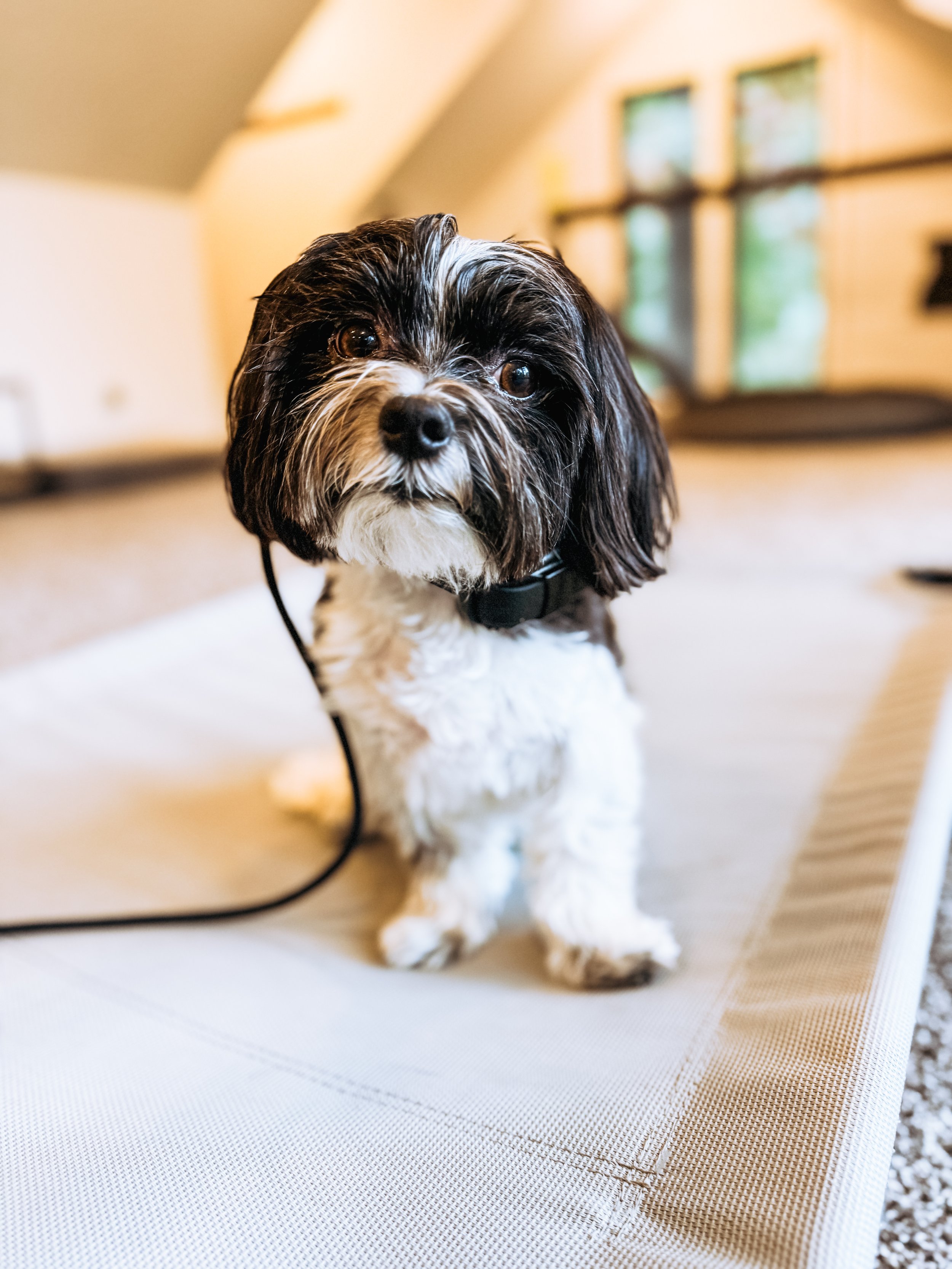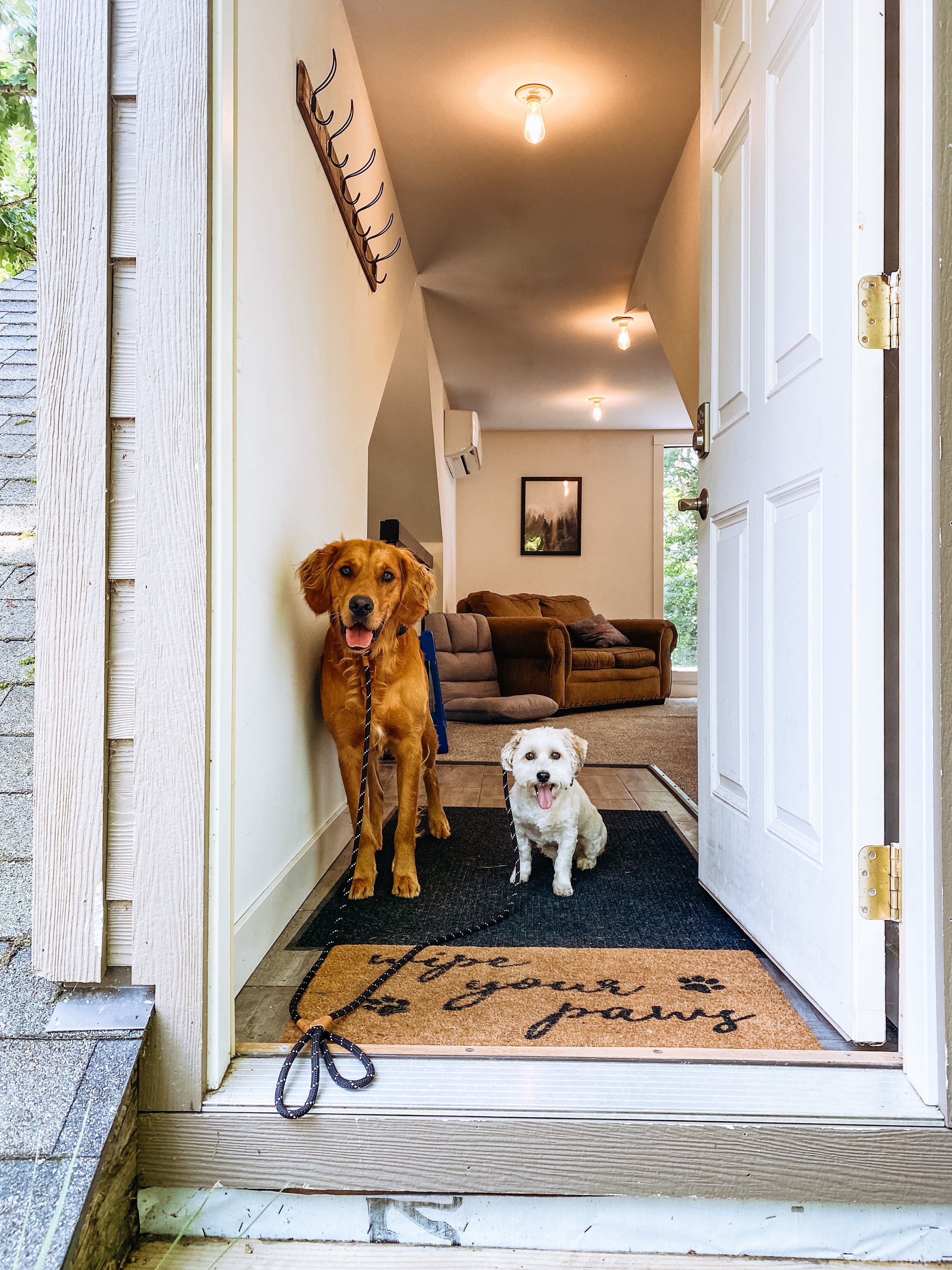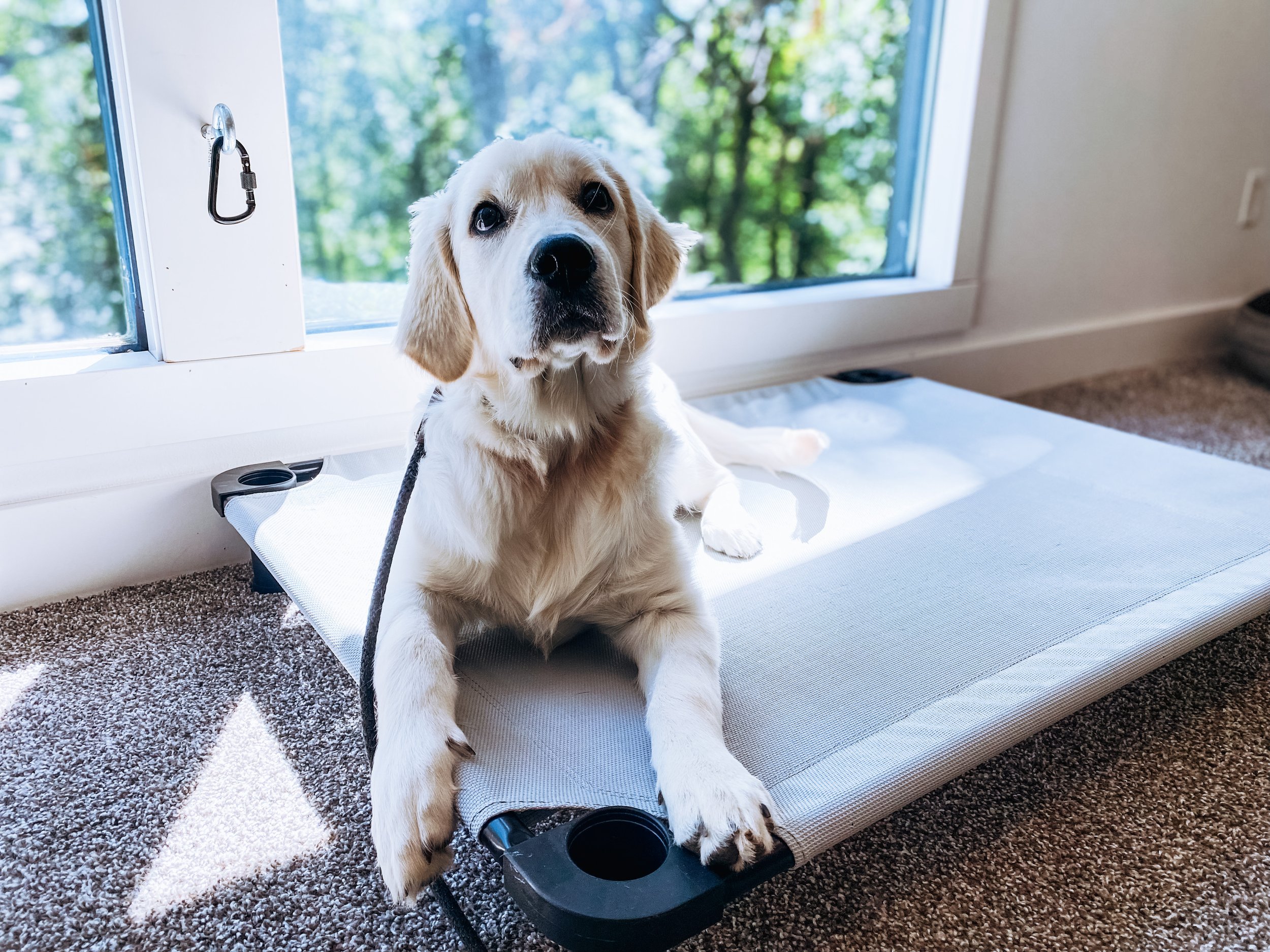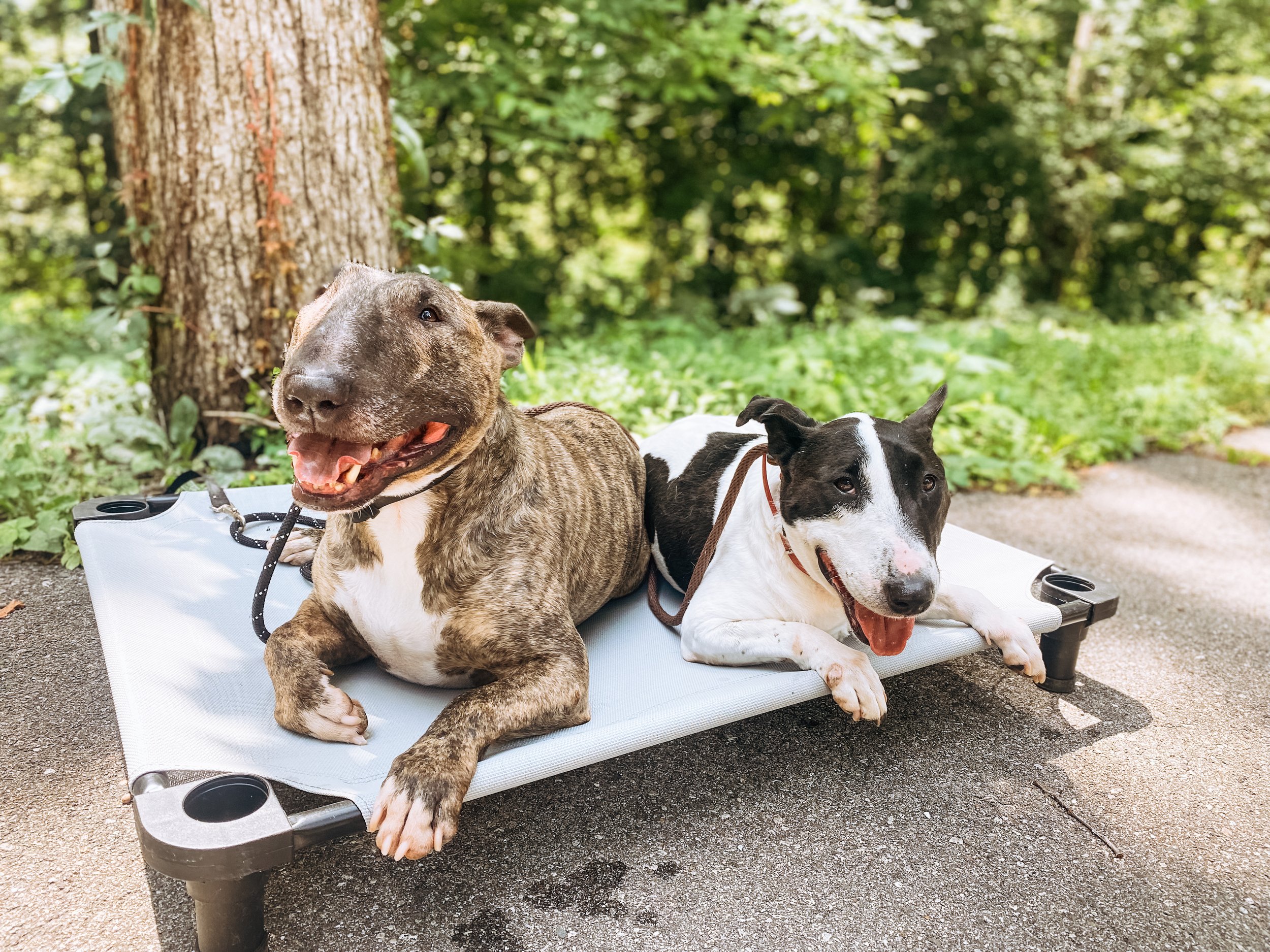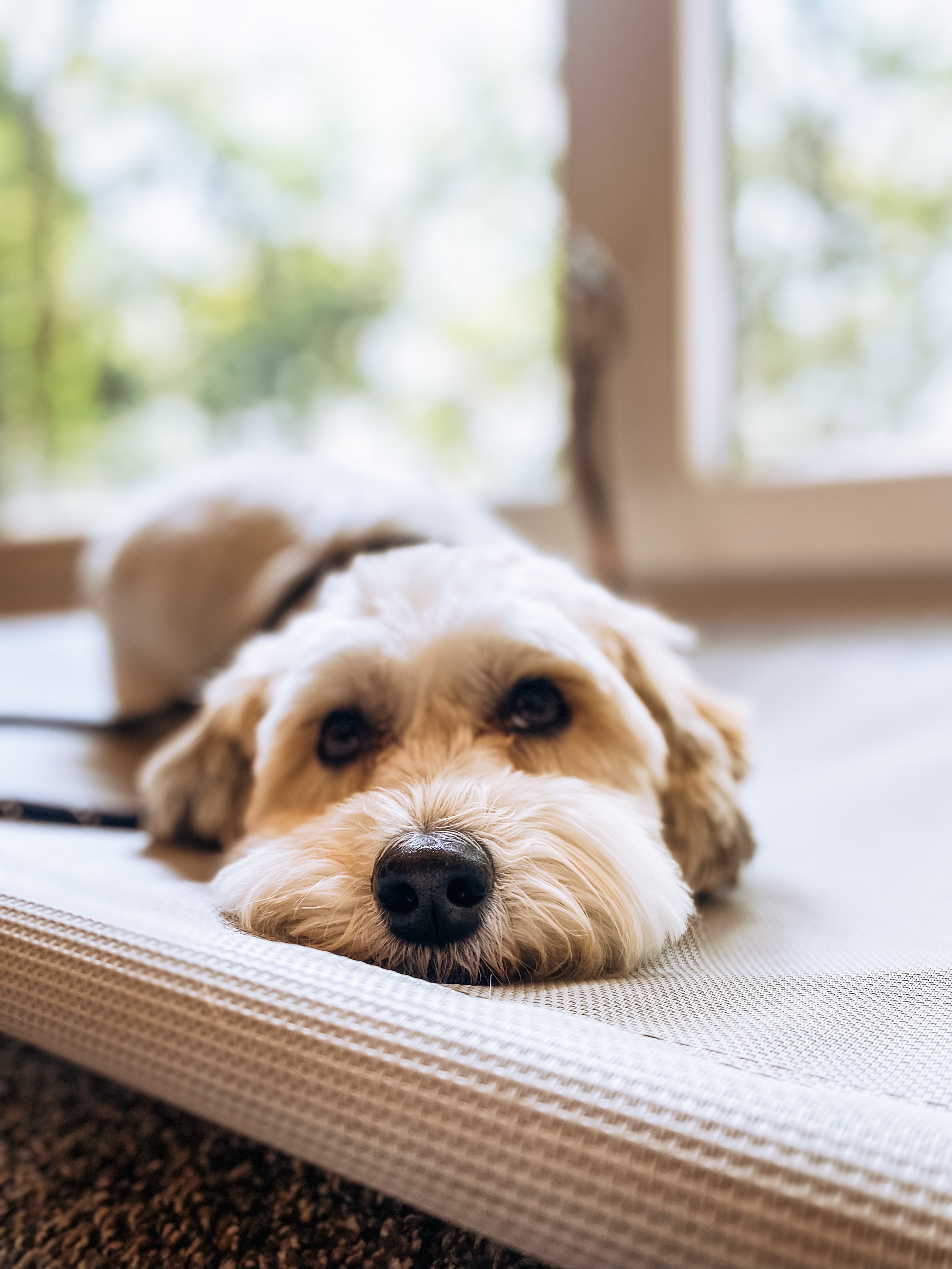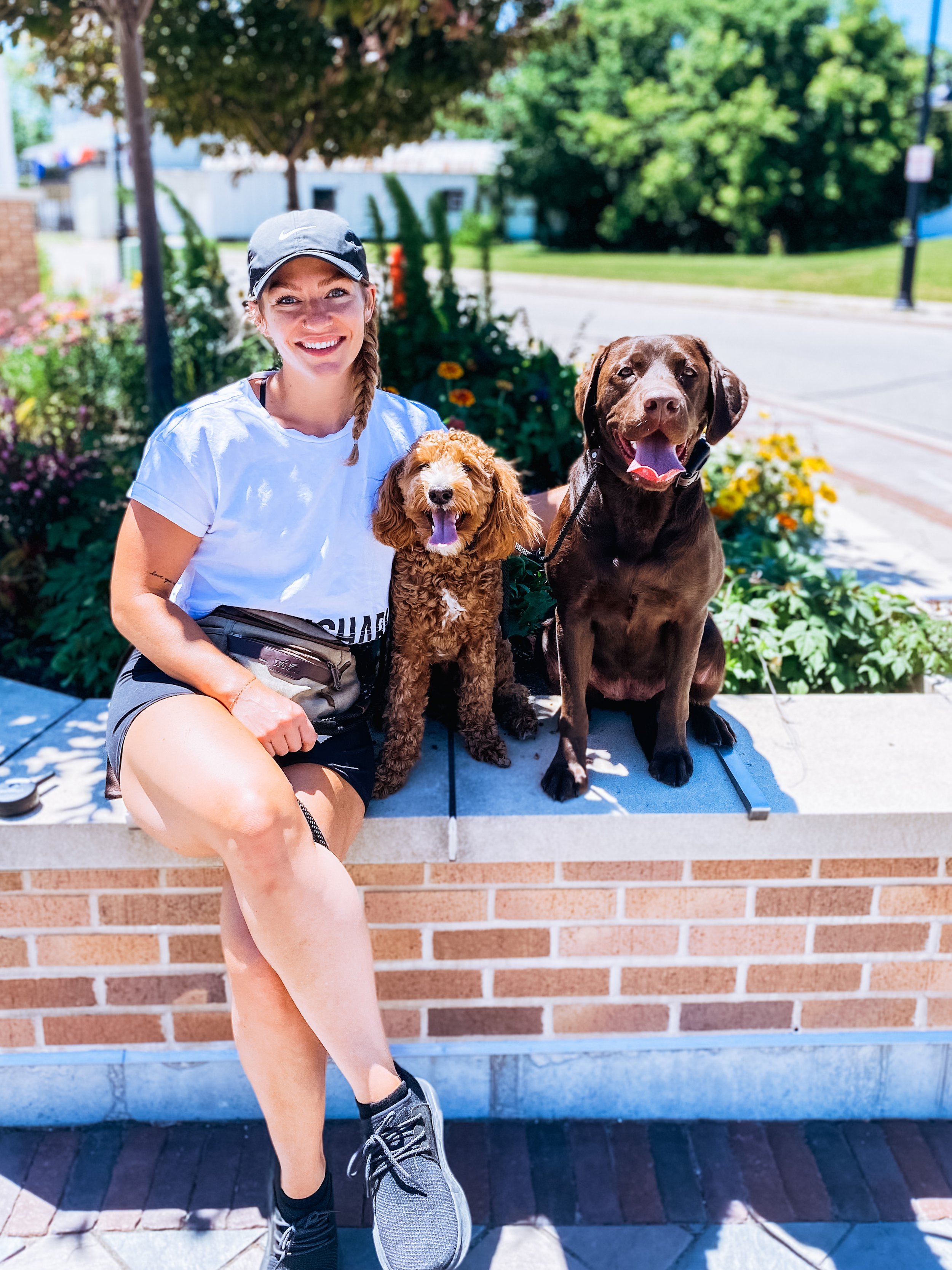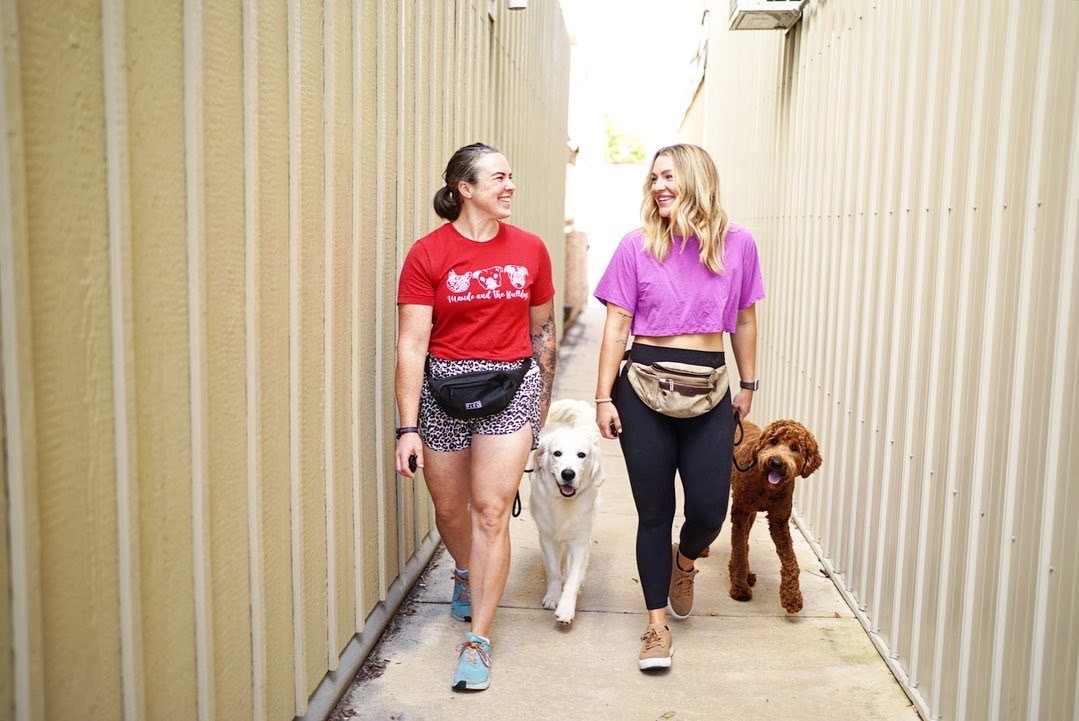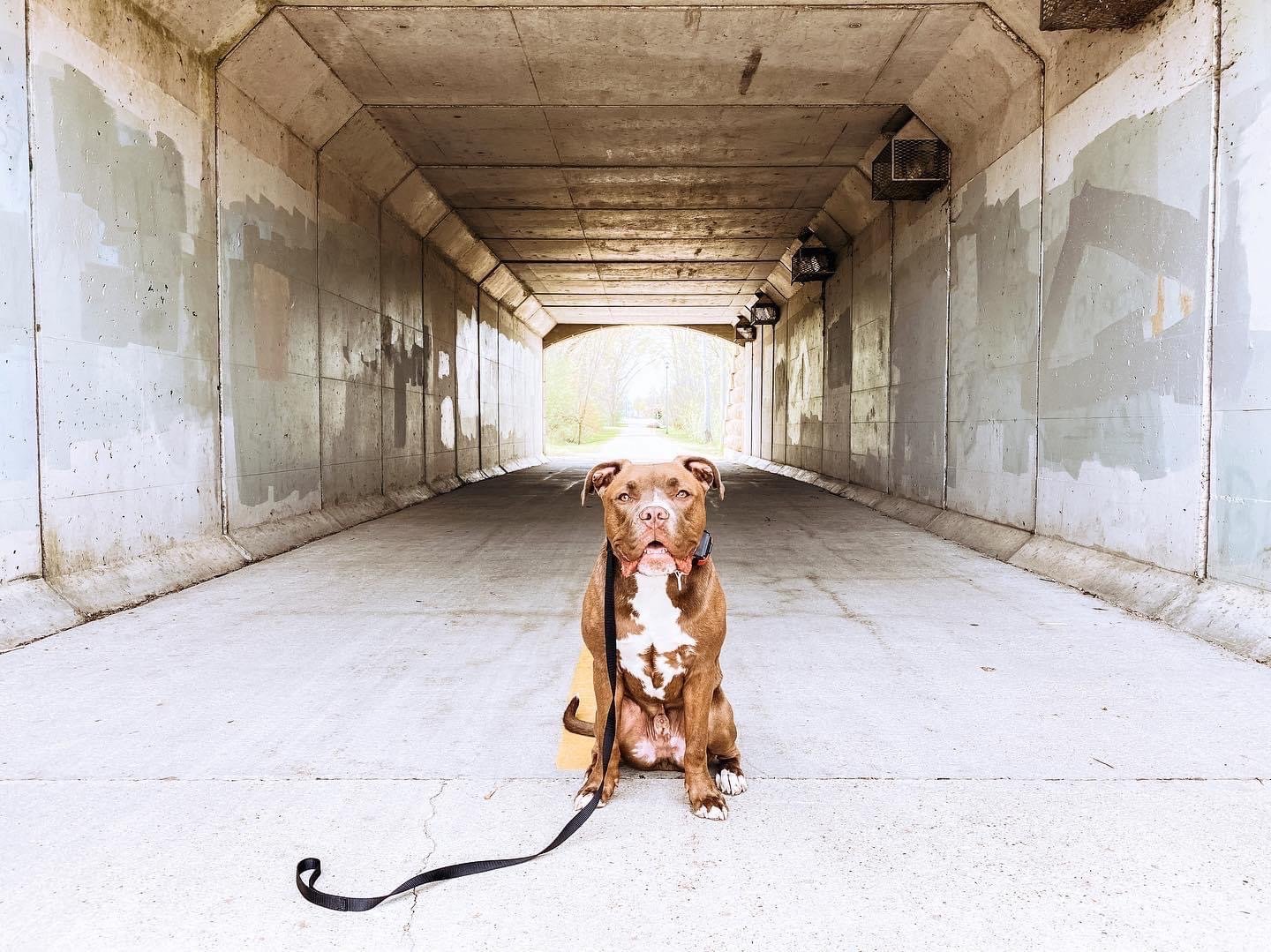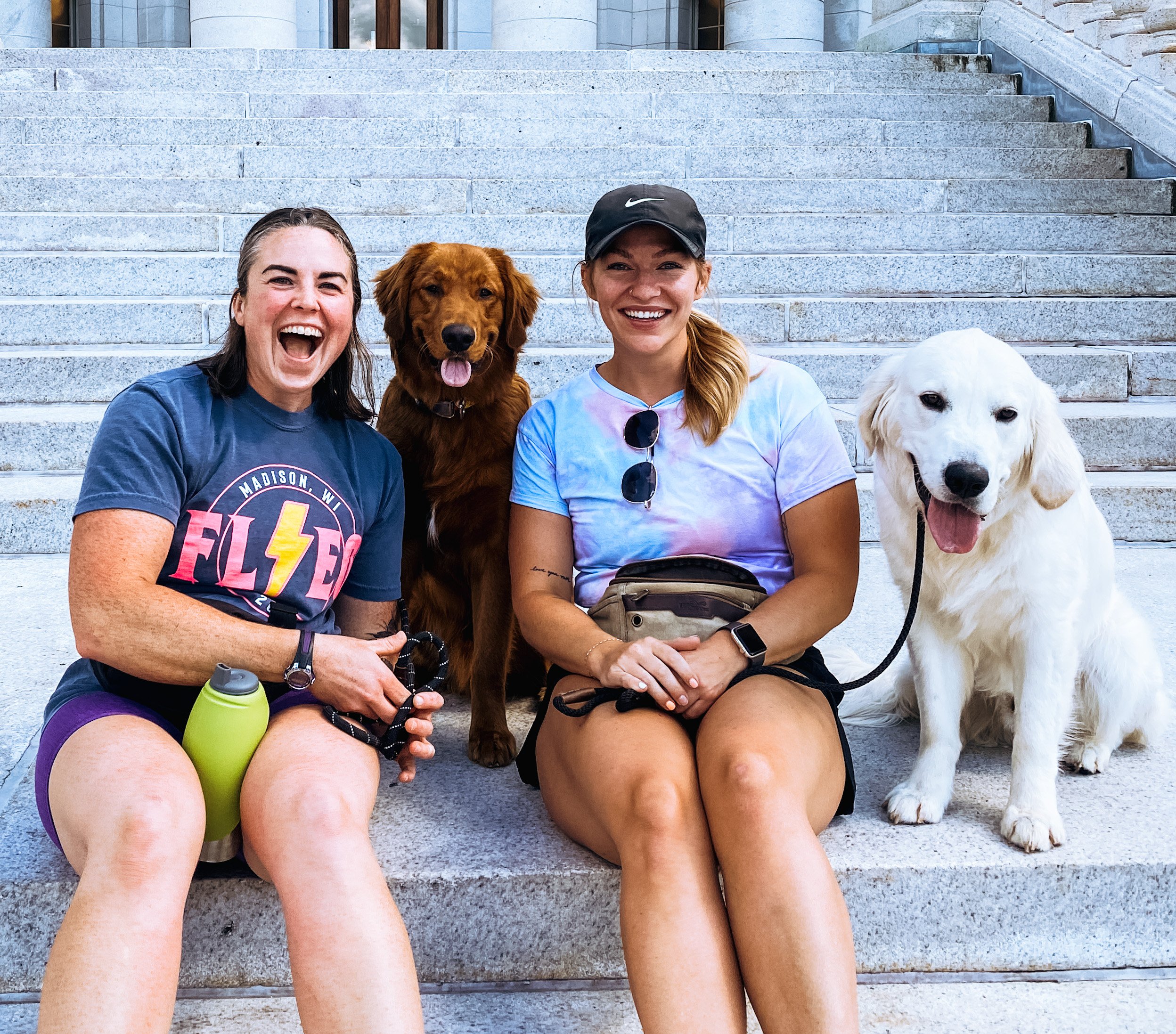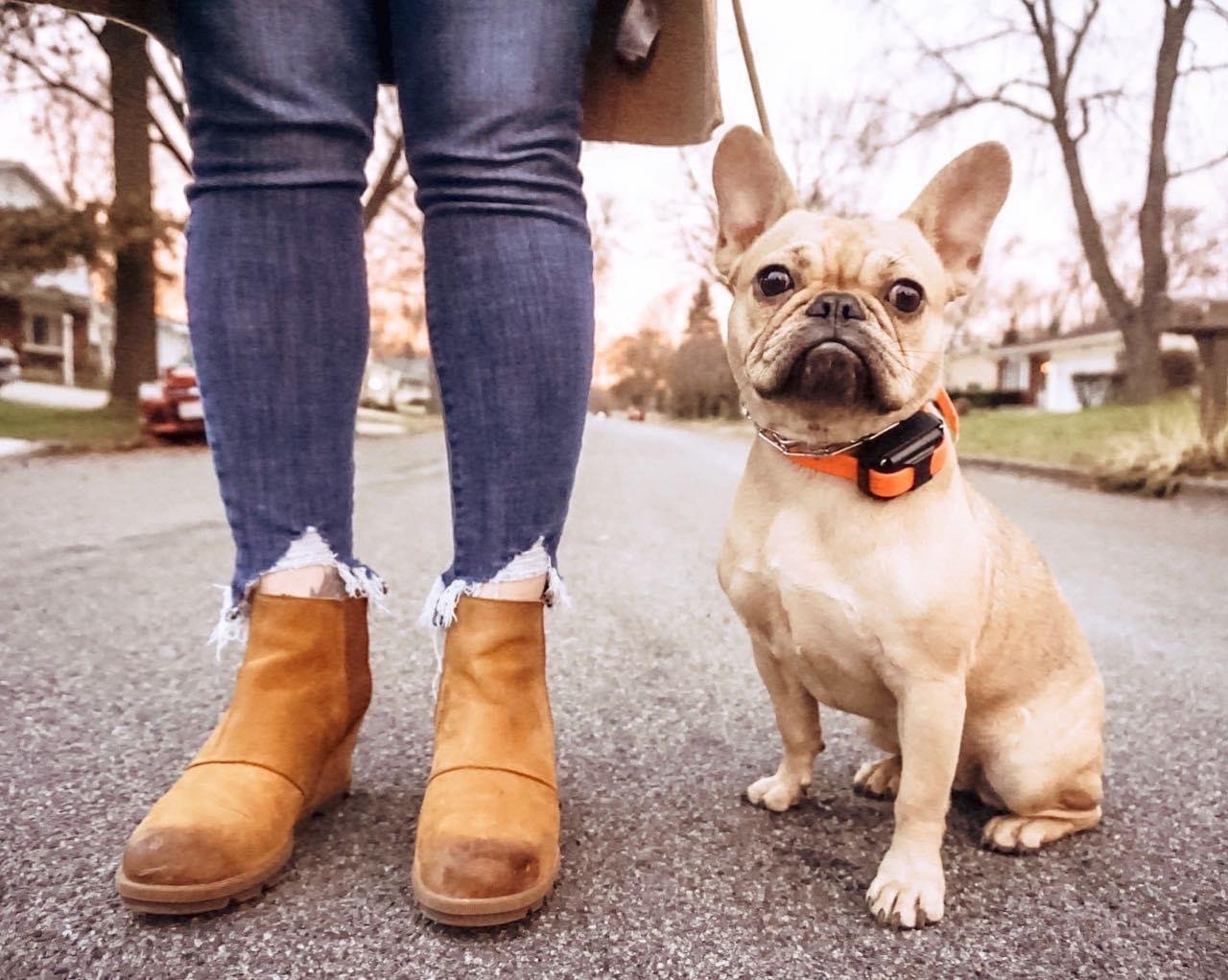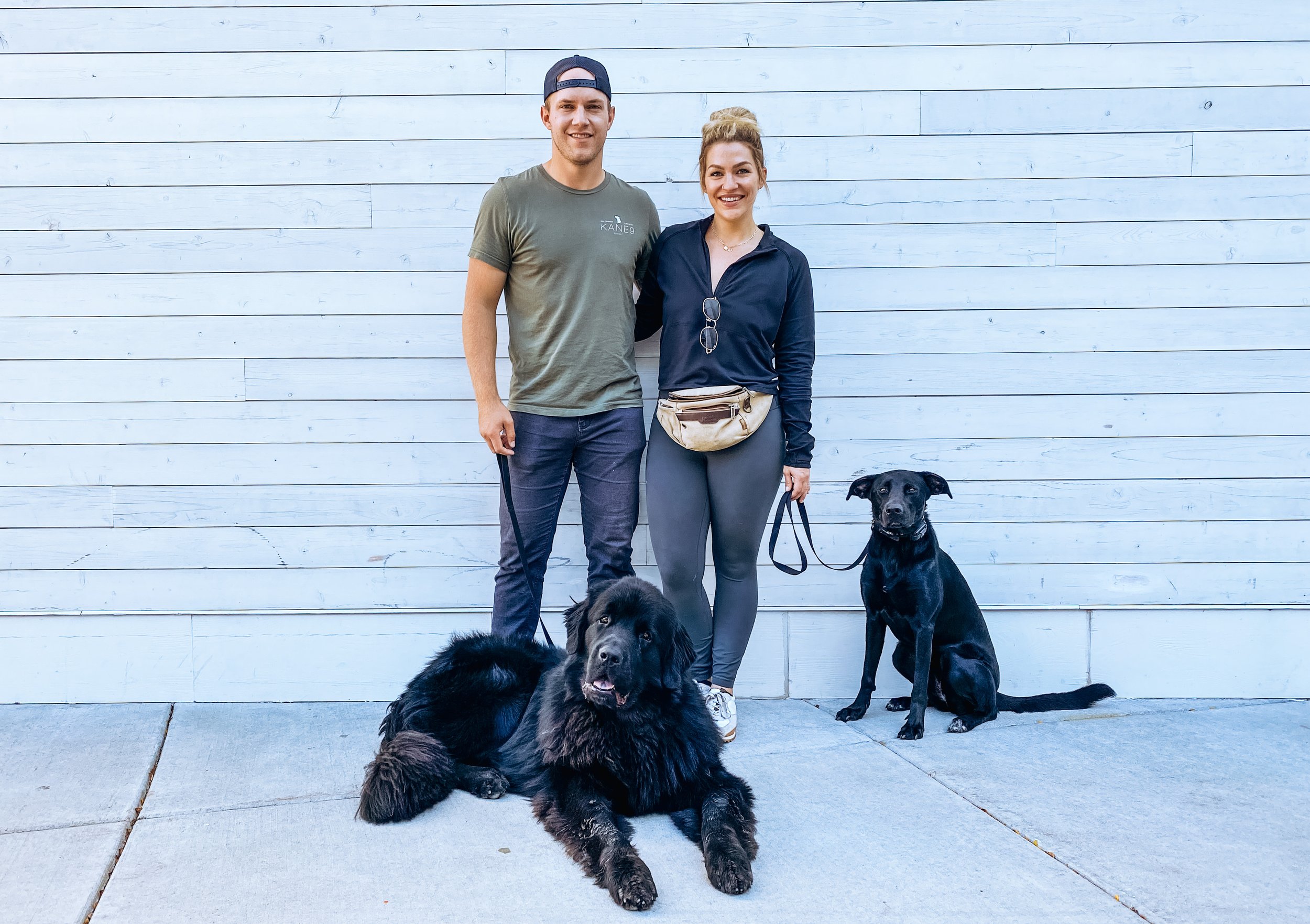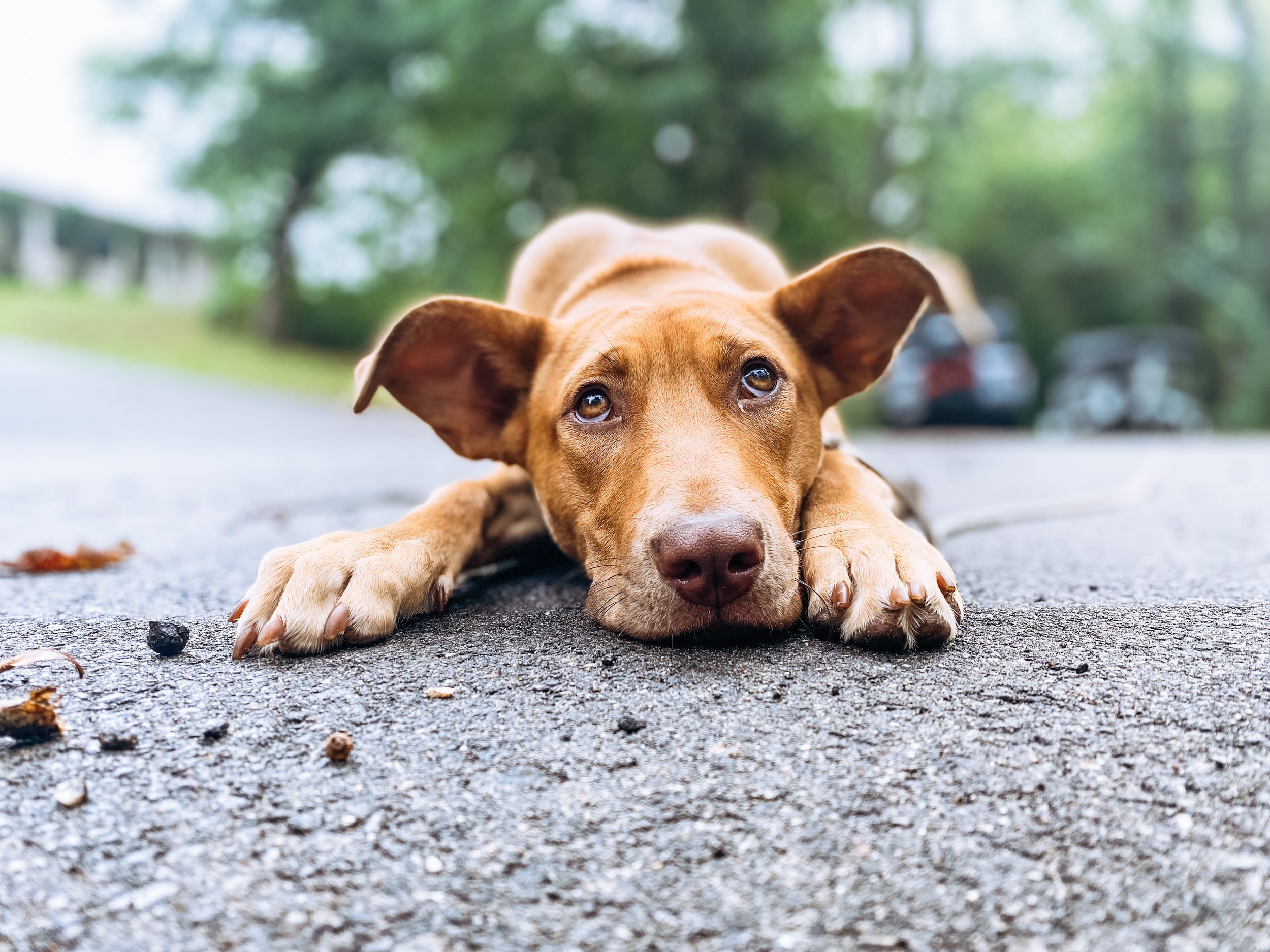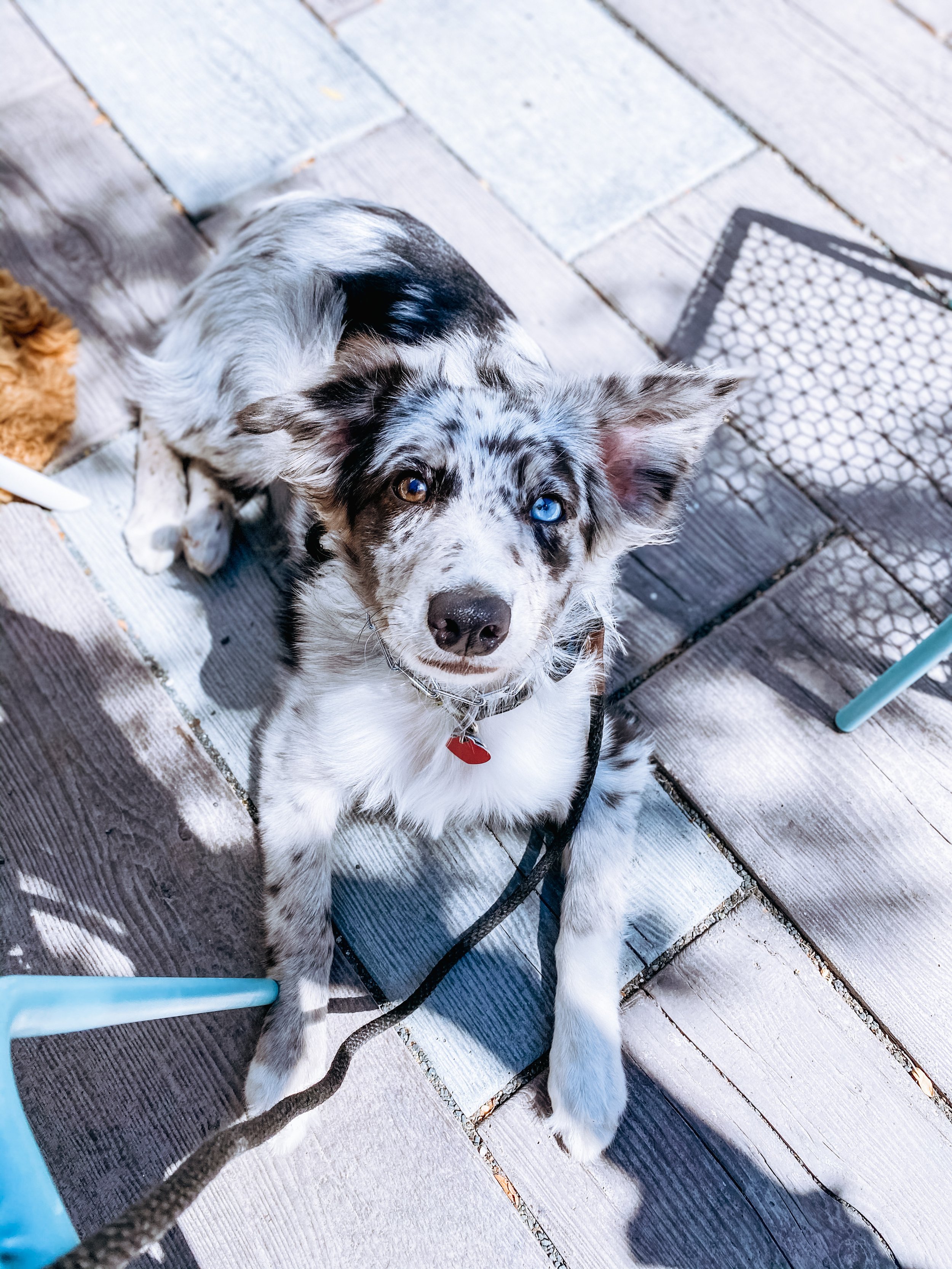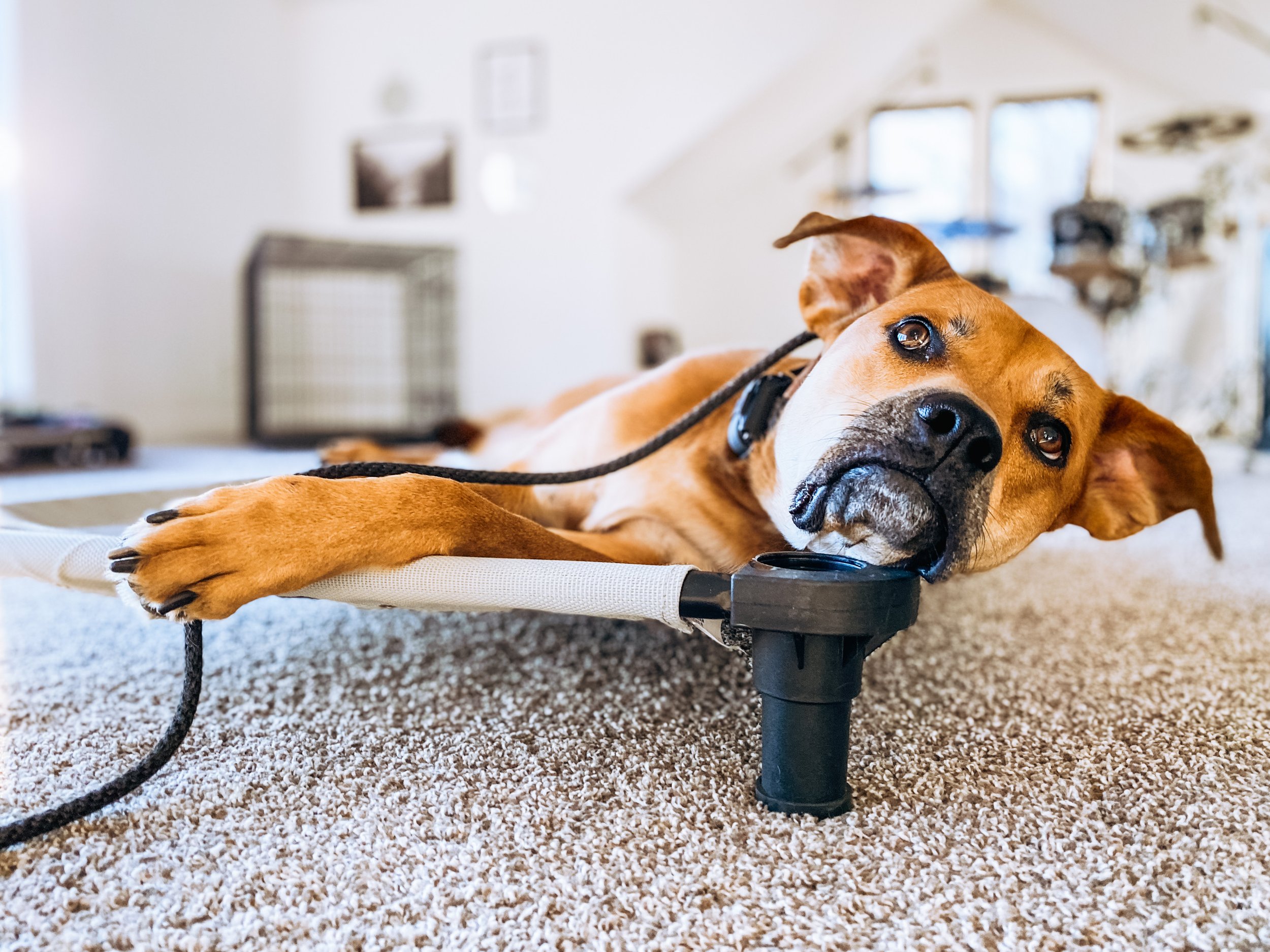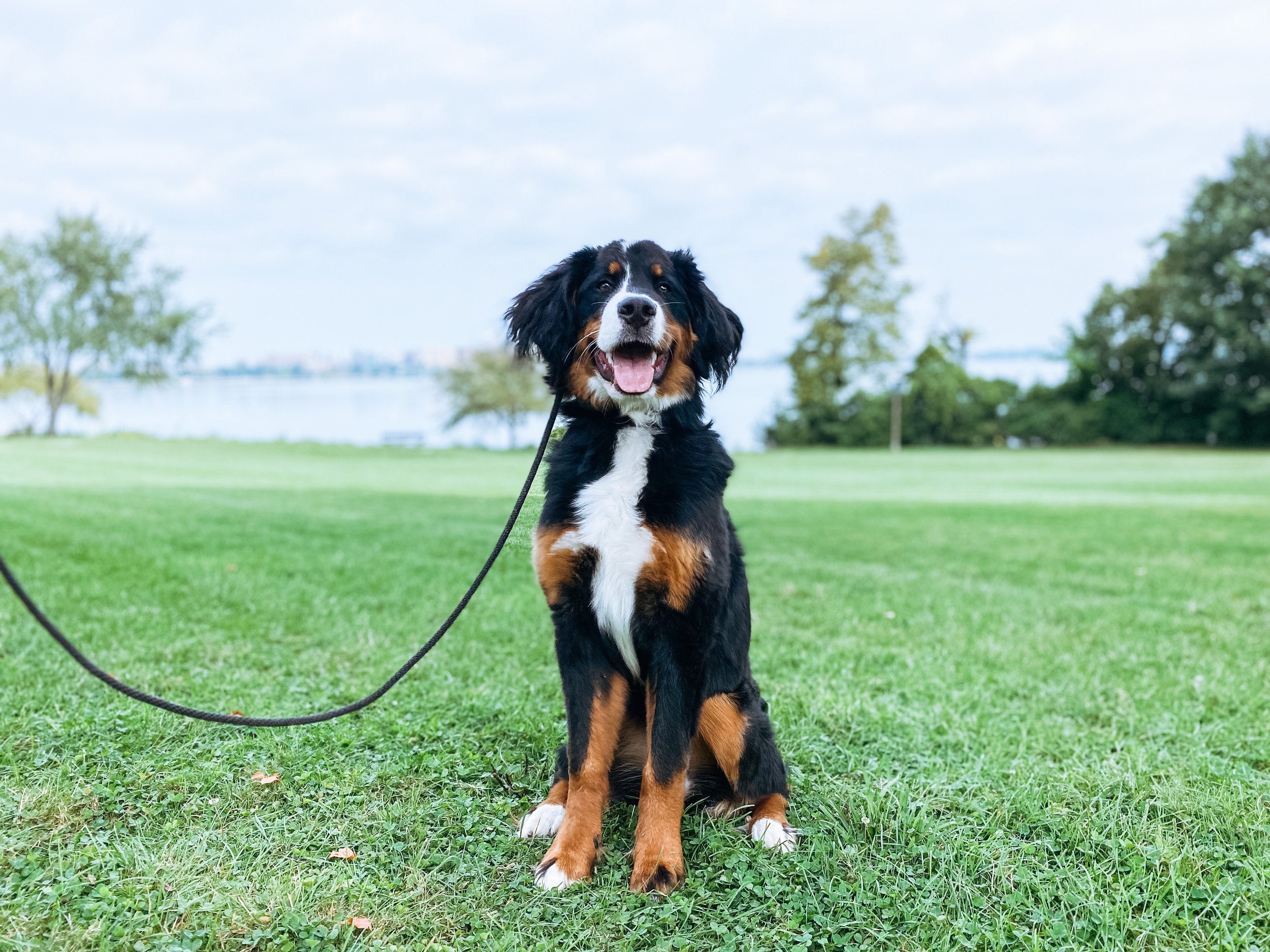Navigating Leash Reactivity
Who doesn’t love a good before and after?
I’m a sucker for them.
It is easy to see them and think, “TELL ME HOW!” then hope it's a quick fix or a “do this one thing” and things will improve! They are so inspiring to see, but there is waaaayyy more to it than what meets the eye. We all know that, right?
Seeing a super reactive dog go from absolutely unhinged to a much calmer, more respectful, and confident dog almost reminds me of a mindblowing before and after of a person getting fit – initially, your brain might go to, “What’s the catch?” or “this must be too good to be true!”
In reality, it's most often just an insane amount of hard work, consistency, adding helpful tools, changing your lifestyle, having a coach or accountability buddy, embracing progress over perfection, trusting the process, adjusting when needed, and relying on discipline when motivation is lacking.
Yes, you guessed it…it's the same “recipe” for dog training. Especially the “extreme makeover” versions of dogs. Nothing about the process and journey to lasting change is easy, but it is worth it.
Here are some things I want you to focus on and commit to if you are struggling with your dog’s reactivity:
1. Tighten up home base: if your dog has a pretty “free for all” lifestyle in your home, this probably impacts your dog’s reactivity or response to your feedback more than you even realize. What I would encourage you to do is go back to using a leash in your home with your dog to be able to give them clear feedback and direction proactively and in response to their choices.
Example: you are getting a package delivered, and your dog runs to the door barking. I want you to grab the leash calmly, give a leash pop, say “no” or “shh,” and guide them away from the door, guiding them to their bed, kennel, or just another space while you work to settle them in.
In all reality, I’d like to see you tighten things up so much that there is barely any free roam in the home, temporarily. What does that mean? Your dog should either be on place (sending them to their bed to lay down and stay), in their kennel (calm & quiet), or intentionally interacting with you (training, playing, releasing them to eat/get water.)
Commit to this. If you are reading this and thinking, “ahhhh that sounds like too much, or it’s not necessary,” then with all due respect, you will continue to struggle with your dog’s reactivity. The changes HAVE to start at home & in the home before you can expect lasting change out on the walk. So, teach a reliable place command, use your dog’s kennel training skills consistently (or add it back in), use a leash in the home, correct unwanted behaviors, award for good choices & give consistent, clear direction!
2. Patience at thresholds: teach your dog how to be mindful and patient at doorways (going outside/inside from the home, in/out of the car, in/out of the kennel); this gives you a moment to give direction, and for you and your dog to be intentionally connected. Practice that at every door, every time. You will see it become a habit and second nature for you and your dog.
3. Leash manners: if your dog’s normal is pulling on the leash, having the opportunity to be all over the place while on a leash, pulling up to find the perfect potty spot & honestly complete chaos on the leash, you can expect that state of mind and “normalcy” to carry over to their reactions to passing other dogs, animals, and people.
Tools: Make sure you and your dog have the right tools to help you communicate with them clearly. Our most frequently used tools: our hands-free slip lead/clip leash, herm sprenger prong collars, and the mini educator from e-collar technologies.
When working with your dog on the lead, think: “Are they in a follower state of mind?” working towards accomplishing that will make such a difference in your walk with your dog. You want your dog to be physically & mentally with you.
Things that help with that:
Frequent turns: you start walking out the door with your dog, and they start to fly past your leg; give them leash guidance in the form of more of a “pop” motion and turn the opposite way, repeat. Watch your body language. Try to be one step and thought ahead of them. Do not wait until they put a bunch of pressure on the leash; you will want to put the leash pressure on before they get to the end of the leash.
Change of pace: do not let your dog set the pace of your walk. If you can physically feel yourself trying to keep up with your dog to keep them in position, then you need to sloooooow down & give them direction. Get creative with your changes of pace. Slow down, pick it up, and keep them thinking!
Awareness of environments: while you are re-establishing the new foundation for your walk with your dog, you are going to have to be aware of what environments might be too much. Start in lower distraction areas like your driveway, a quieter park, a parking lot, a quieter street in your neighborhood, etc.
4. Pre & Post Walk ideas: say you have been working on all the foundational things above. It is now time for you to incorporate them into your daily routines. I recommend you do the same before and after you & your dog’s walk. Have your dog hang out on place or in their kennel calmly for a bit before you head out for the walk. Keep your energy calm, cool, and collected. If you amp your dog up with, “WANNA GO FOR A WALK?” and they are jumping around and going crazy, recognize that this will be the state of mind you are battling on the walk. While their excitement is probably so cute, the reactivity on the walk is not. The same goes for when you get back: walk them in on leash, bring them to get some water, then back on place or in their kennel for a bit to decompress after the walk. All of this is to help them get to a spot where their nervous system is used to cycling down – which is much healthier for them overall.
5. Feeding time: Mix things up from day to day. Some days, you might only have time for waiting for patience & eye contact for their meal; other days you might be able to do 5 minutes of active training. Fit it in when you can!
6. Overall training & lifestyle: It is safe to say that based on all of the information above, reactivity is NOT a quick fix. It is a combination of the dog you have, your training, their lifestyle with you, their needs being met, you correcting them for unwanted behaviors, addressing for arousal, and setting them up for success. So, continue to work on their obedience training, helping them practice cycling down to a calmer state of mind and adjusting things in a sustainable, attainable manner.
Now let’s talk a little bit more about KANE9’s specific walk expectations:
We teach a “heel” command, which means the dog is in follower mode on your left side, slightly behind your knee. Pretend there is an invisible wall extended from your leg; if they are past it, they are too far ahead! They should follow your pace & be in tune with you. This command is so much more about the state of mind than obedience!
We use “heel” when heading out for a dog’s daily walk, when out in public & even when we want to practice off-leash/on their long line. The structured walk is very important during the “reactivity rehab” process. You will focus more on these walks than long-line/sniff walks for a while. Your dog's nose should not be sniffing the ground; they should not be approaching people or other dogs while in heel! This does not mean you don’t give your dog time to sniff; it just needs to be permission-based.
Recognize that not every walk will be a 10/10; that is okay; learn from those experiences! It is common for your dog's e-collar numbers or pops on the leash to be higher/stronger outside. You want to think about your dog's e-collar numbers or leash information matching their state of mind.
Do not allow your dog to fixate & load during the walk, especially if they can be reactive or excitable on leash.
What does that look like? Your dog's ears go up, their brow furrows, their body stiffens & they are hyper-fixated on something. You want to be sure to address the very first sign of arousal/disconnection.
Here is what that would look like for us: "No" or "shh," tap on the black S button (stim) at a higher level, create space for your dog by moving away from the trigger & use a leash pop in the direction you want their head & body to go as directional guidance & follow-through. Reward when your dog cycles down.
If your dog is having a bad reaction, DO NOT keep hitting the stim button; get out of the situation & practice addressing for arousal at a higher number next time. Take a deep breath & move on!
If you are currently just using a slip lead or prong collar, you will have to try leash pops versus the stim tap, but we find the e-collar to help so very much & encourage you to look into that if you are still struggling with your dog’s reactivity.
To make progress, you have to change what you are currently doing. You have to be consistent and not be afraid to get help. Change is hard, especially when it comes to having to adjust how you currently live life with your dog. We get it!
Again, I know the before and afters are so cool to see; they give hope, they build excitement, and they can also create skepticism. All of those things are normal. Nothing about the transformation is simple. There are extremely impactful moments that make a huge difference, but those moments will never be enough to balance out a lifestyle for your dog that isn't conducive to their growth, so that is where you need to commit to consistency. It’s so very worth it.
We have resources for you:
KANE9’s Mindset over Obedience Lifestyle E-Course!
This e-course will guide you through taking your relationship with your dog to the next level! Included:
Over two hours of video content!
A custom printable workbook!
Six modules + a bonus section!
Access to a private Facebook group for continued support!


